Related Research Articles

A flying car or roadable aircraft is a type of vehicle which can function as both a personal car and an aircraft. As used here, this includes vehicles which drive as motorcycles when on the road. The term "flying car" is also sometimes used to include hovercars.

An autogyro, also known as a gyroplane or gyrocopter, is a type of rotorcraft that uses an unpowered rotor in free autorotation to develop lift. Forward thrust is provided independently, by an engine-driven propeller. While similar to a helicopter rotor in appearance, the autogyro's rotor must have air flowing across the rotor disc to generate rotation, and the air flows upwards through the rotor disc rather than down.
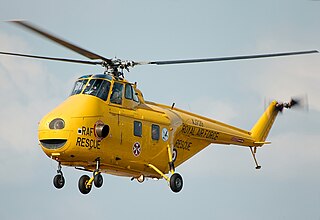
The Westland Whirlwind helicopter was a British licence-built version of the U.S. Sikorsky S-55/H-19 Chickasaw. It primarily served with the Royal Navy's Fleet Air Arm in anti-submarine and search and rescue roles.
The CarterCopter is an experimental compound autogyro developed by Carter Aviation Technologies in the United States to demonstrate slowed rotor technology. On 17 June 2005, the CarterCopter became the first rotorcraft to achieve mu-1 (μ=1), an equal ratio of airspeed to rotor tip speed, but crashed on the next flight and has been inoperable since. It is being replaced by the Carter Personal Air Vehicle.

The Fairey Rotodyne was a 1950s British compound gyroplane designed and built by Fairey Aviation and intended for commercial and military uses. A development of the earlier Gyrodyne, which had established a world helicopter speed record, the Rotodyne featured a tip-jet-powered rotor that burned a mixture of fuel and compressed air bled from two wing-mounted Napier Eland turboprops. The rotor was driven for vertical takeoffs, landings and hovering, as well as low-speed translational flight, but autorotated during cruise flight with all engine power applied to two propellers.

The Bristol Type 171 Sycamore was an early helicopter developed and built by the helicopter division of the Bristol Aeroplane Company. The name refers to the seeds of the sycamore tree, Acer pseudoplatanus, which fall with a rotating motion. It has the distinction of being the first British helicopter to receive a certificate of airworthiness, as well as being the first British-designed helicopter to be introduced by and to serve with the Royal Air Force (RAF).
Wombats are a family of Australian marsupials. Wombat or Wombats may also refer to:

The Bristol Type 192 Belvedere is a British twin-engine, tandem rotor military helicopter built by the Bristol Aeroplane Company. It was designed by Raoul Hafner for a variety of transport roles including troop transport, supply dropping and casualty evacuation. It was operated by the Royal Air Force (RAF) from 1961 to 1969. The Belvedere was Britain's only tandem rotor helicopter to enter production, and one of the few not built by Boeing or Piasecki.

The Helicopter Museum in Weston-super-Mare, North Somerset, England, is a museum featuring a collection of more than 80 helicopters and autogyros from around the world, both civilian and military. It is based at the southeastern corner of the former Weston-super-Mare Airport.

A rotorcraft or rotary-wing aircraft is a heavier-than-air aircraft with rotary wings or rotor blades, which generate lift by rotating around a vertical mast. Several rotor blades mounted on a single mast are referred to as a rotor. The International Civil Aviation Organization (ICAO) defines a rotorcraft as "supported in flight by the reactions of the air on one or more rotors".

The Fairey Ultra-light Helicopter was a small British military helicopter intended to be used for reconnaissance and casualty evacuation, designed by the Fairey Aviation Company.
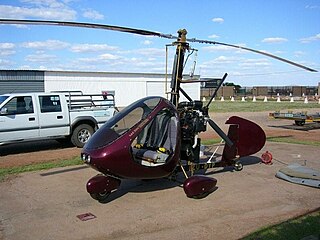
The RAF 2000 is a two-seat kit built autogyro that was designed by Bernard J. Haseloh. Kits were first manufactured by Rotary Air Force Marketing Inc. in Canada. The marketing and manufacturing rights were sold to the Mocke Family in Upington, Northern Cape, South Africa in April 2007. They formed UMRTC Eben Mocke to produce the aircraft design.

The Gadfly HDW.1 is a 1960s British two-seat cabin autogyro.
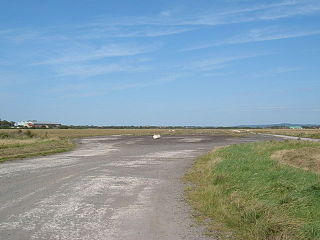
Royal Air Force Weston-super-Mare or more simply RAF Weston-super-Mare is a former Royal Air Force station which was located on a civilian airfield in Weston-super-Mare, Somerset, England.
Christoper Julian, was a motorcycle racer, born in Fraddon, Cornwall, UK. He died in 1997 in a gyrocopter accident at age 60.
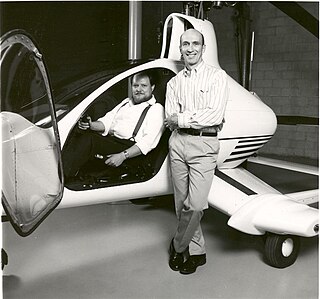
Skyworks Global, formerly Groen Brothers Aviation, Inc. and then Groen Aeronautics Corporation, is an American autogyro research and development company based in Salt Lake City, Utah. The company was founded in 1986 by David Groen and his late brother Jay Groen. David Groen remains as Senior Advisor.
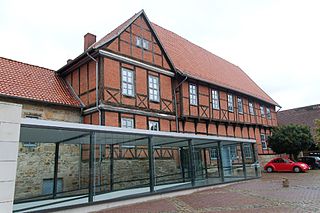
The Hubschraubermuseum Bückeburg is located in the German town of Bückeburg, 30 miles (50 km) to the west of Hannover. The museum is the sole museum in Germany specialising in rotary-wing flight and one of few worldwide. The museum is dedicated to the history and technology of the helicopter.
Trixy Aviation Products GmbH is an Austrian aircraft manufacturer based in Dornbirn, that was founded by Rainer Farrag. The company specializes in the design and manufacture of autogyros.
The Wombat Gyrocopters Wombat, sometimes called a Julian Wombat, is a British autogyro that was designed by Chris Julian and produced by Wombat Gyrocopters of St Columb, Cornwall, introduced in 1991. Now out of production, when it was available the aircraft was supplied as a kit for amateur construction.

Helicopter Air Transport Incorporated (HAT) was formed in New Jersey, United States, to exploit the helicopters which were developed during World War II. It was the world's first commercial helicopter operator.
References
- 1 2 Purdy, Don: AeroCrafter - Homebuilt Aircraft Sourcebook, Fifth Edition, page 335. BAI Communications, 15 July 1998. ISBN 0-9636409-4-1
- 1 2 "Julian Wombat Arrival". hmfriends.org.uk. Retrieved 6 April 2015.
- ↑ "The Helicopter Museum to receive Wombat gyrocopter - Vertical Magazine - The Pulse of the Helicopter Industry". verticalmag.com. Retrieved 6 April 2015.
- ↑ "Wombat for Helicopter Museum". rotor.com. Retrieved 6 April 2015.
- ↑ CAA (6 April 2015). "GINFO Search Results Summary" . Retrieved 6 April 2015.